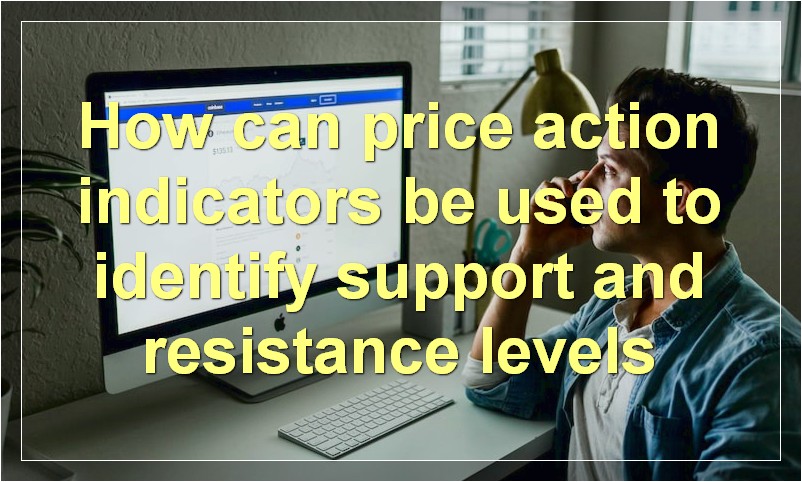There are a lot of different ways to trade the markets, but one method that has gained popularity in recent years is price action trading. Price action trading is a form of technical analysis that looks at the price movement of a security to make decisions. Many traders believe that this method can be used to identify market trends and make better trading decisions. However, there are also some drawbacks to using price action indicators. In this article, we will discuss the pros and cons of price action indicators so that you can decide if they are right for you.
What are the most popular price action indicators
When it comes to trading, there are a lot of indicators that can be used to help you make decisions. But, when it comes to price action indicators, these are some of the most popular ones that traders use.
The first indicator is the moving average. This is a tool that is used to help smooth out price action and make it easier to identify trends. The moving average is calculated by taking the average of a certain number of past prices. The most common time periods for the moving average are 20, 50, and 200.
Another popular price action indicator is the Bollinger Bands. This is a tool that uses two standard deviations above and below a simple moving average to create a band. The Bollinger Bands can help you identify overbought and oversold conditions in the market.
The last price action indicator we will discuss is the MACD (moving average convergence divergence). This is a tool that uses two exponential moving averages to create a histogram. The MACD can help you identify momentum changes in the market. These are just a few of the most popular price action indicators that traders use.
What are some of the benefits of using price action indicators

When it comes to trading forex, one of the most important things to keep in mind is that timing is everything. This is where price action indicators can come in handy. Price action is simply the movement of price over time, and by studying price action, traders can get a better sense of where the market is headed.
One of the benefits of using price action indicators is that they can help you make more informed decisions about your trades. By looking at how price has moved in the past, you can get a better idea of where it might go in the future. This can help you make better entries and exits, and ultimately improve your overall results.
Another benefit of using price action indicators is that they can help to simplify your trading. When you’re just starting out, the forex market can seem incredibly complex. But by focusing on price action, you can start to see the big picture and make simpler, more effective trades.
Overall, price action indicators can be a valuable tool for any trader. If you’re looking to improve your results, then consider incorporating them into your trading strategy.
What are some of the drawbacks of using price action indicators
There are a few drawbacks to using price action indicators that traders should be aware of. First, if a trader is relying too heavily on these indicators, they may miss important market cues that could lead to a losing trade. Additionally, price action indicators can be lagging, meaning that they may not provide timely entry or exit signals. Finally, some indicators may give false signals in choppy markets, leading to losses.
How do price action indicators work
Price action indicators are a type of technical analysis that uses past prices to make predictions about future price movements. Price action is the movement of a security’s price over time, and can be represented on a chart.
There are many different price action indicators, but they all work in essentially the same way. They take past price data and use it to try to predict future price movements. Some common price action indicators include moving averages, support and resistance levels, and Fibonacci retracements.
Price action indicators can be used alone or in conjunction with other technical indicators. They can be used to generate buy and sell signals, or to confirm other signals. Many traders find price action indicators to be helpful in making trading decisions.
What is the difference between lagging and leading price action indicators
Lagging indicators are those that follow price action, while leading indicators precede price action. The most popular lagging indicator is the moving average; the most popular leading indicators are oscillators such as the Relative Strength Index (RSI). When choosing which indicator to use, traders must first identify whether they want to use a leading or lagging indicator. Each type has its own strengths and weaknesses.
Lagging indicators are best used to confirm trends. For example, if prices are trending higher and the moving average is trending higher as well, this is considered confirmation that the trend is indeed intact. Lagging indicators can also be used to identify support and resistance levels. For example, if prices bounce off the moving average, this may be indicative of support at that level.
Leading indicators are best used to predict future price action. Oscillators such as the RSI can be used to identify overbought and oversold conditions, which may be indicative of a reversal. Leading indicators can also be used to generate buy and sell signals. For example, if the RSI crosses above 50, this may be indicative of a bullish trend and a buy signal.
How can price action indicators be used to identify support and resistance levels

Price action indicators can be used to identify support and resistance levels by looking at the price of an asset over time. Support and resistance levels are areas where the price of an asset has a tendency to pause or reverse. By identifying these levels, traders can make better decisions about when to buy or sell an asset.
There are many different ways to identify support and resistance levels, but one common method is to use a moving average. A moving average is simply a line that represents the average price of an asset over a certain period of time. By looking at a moving average, traders can get a good idea of where the price of an asset is likely to find support or resistance.
Another common method for identifying support and resistance levels is to use Fibonacci retracements. Fibonacci retracements are based on the Fibonacci sequence, which is a series of numbers that have a mathematical relationship. Traders often use Fibonacci retracements to find potential support and resistance levels.
Finally, another popular method for finding support and resistance levels is to use pivot points. Pivot points are calculated using the high, low, and close prices from the previous day. By looking at the pivot point, traders can get a good idea of where the market is likely to turn.
All of these methods can be useful for finding potential support and resistance levels. However, it’s important to remember that no indicator is perfect. Support and resistance levels are not always accurate, and they can change over time. As such, it’s important to use multiple indicators when making trading decisions.
What are some common false signals that price action indicators can generate
There are a few false signals that price action indicators can generate. One is when the market is range-bound and the indicator line forms a “double top” or “double bottom.” Another is when the market is very volatile and the indicator line “spikes” up or down. Finally, some indicators can give false signals during certain types of news events (e.g., earnings announcements).
How can price action indicators be used in conjunction with other technical indicators
There are a number of ways that price action indicators can be used in conjunction with other technical indicators to provide traders with an edge in the market. One way is to use price action indicators as a confirmation tool. For example, if a trader is looking at a chart and sees a potential trade setup using a momentum indicator, they could then look to see if the price action is confirming the signal. If it is, then the trader can enter the trade with more confidence.
Another way to use price action indicators is as a trend following tool. This means that if a trader sees a strong uptrend on the charts, they can look for bullish price action signals to enter trades. Similarly, if a trader sees a strong downtrend, they can look for bearish price action signals to enter trades.
Finally, price action indicators can also be used to identify support and resistance levels. This means that if a trader sees a certain level where the price has repeatedly bounced off, they can look for price action signals around that level to enter trades. Similarly, if a trader sees a certain level where the price has repeatedly rejected, they can look for price action signals around that level to enter trades.
What is the best time frame to use when trading with price action indicators
The answer to this question depends on a number of factors, including the trader’s goals, risk tolerance, and trading style. That said, many price action traders find that using shorter time frame charts (e.g., 5-minute or 15-minute charts) can help them to capture more intraday price movements.
Are there any dangers of over-relying on price action indicators
There are a few dangers of over-relying on price action indicators. First, if you use too many indicators, your chart will become cluttered and confusing. Second, you may miss important market signals if you only focus on one or two indicators. Third, you may delay making trading decisions if you wait for all of your indicators to line up before taking action. Fourth, you may end up chasing the market if you rely too heavily on indicator-based trading systems. Finally, you may miss out on opportunities if you only look at price action and ignore other important information such as fundamentals and market sentiment.

